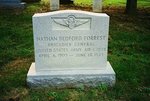Njaco
The Pop-Tart Whisperer
29 May 1943
GERMANY: 292 Lancasters, 185 Halifaxes, 118 Stirlings, 113 Wellingtons and 11 Mosquitoes attacked Wuppertal, 33 aircraft lost. This attack was aimed at the Barmen half of the long and narrow town of Wurrertal and was the outstanding success of the Battle of the Ruhr. Both Pathfinder marking and Main Force bombing was particularly accurate and a large fire area developed in the narrow streets of the old centre of the town. It is probable that this fire was so severe that the first small form of what would later become known as a 'firestorm' developed. Because it was a Saturday night, many of the town's fire and air raid officials were not present, having gone to their country homes for the weekend and the fire services of the town, in their first raid, were not able to control the fires. Approximately 1000 acres, possibly 80% of Barmen's built up area, was destroyed by fire. 5 out of the town's 6 largest factories, 211 other industrial premises and nearly 4,000 houses were completely destroyed. The number of buildings classed as seriously damaged, 71 industrial and 1,800 domestic, indicates the high proportion of complete destruction. Various figures were given for the number of people killed but our expert on Ruhr raids, Norbert Kruger, advises that the figure of 'approximately 3,400' was the nearest reasonable estimate. The above figures indicate that the property damage in this raid was about twice as severe as any previous raid on a German city while the number of people killed in this comparatively unprepared backwater of the Ruhr was about 5 times greater than any previous city raid.The Bf 110s of NJG 1 along with the Fw 190s and Bf 109s of NJVK intercepted the formations of RAF bombers attacking Wuppertal. Many of the bombers were shot down during the 20 mile run through the guns of the Kammhuber Line, ground-controlled "boxes" patrolled by Luftwaffe night-fighters. Many Nachtjagders added to their scores including Hptm. Manfred Meuer, Staffelkapitaen of 3./NJG 1, who destroyed 4 RAF bombers during the combat. Two Halifaxes were brought down by pilots from Major Hajo Herrmann's NJVK. The raid killed 2,450 civilians and left 118,000 homeless. Over 80% of the city was destroyed as 1000s acres of the city were burned out in a firestorm.
WESTERN FRONT: The USAAF's VIII Bomber Command in England flies Mission Number 61: 169 B-17 Flying Fortresses are dispatched against the submarine pens and locks at Saint-Nazaire, France; 147 aircraft hit the target at 1706-1711 hours local and claim 6-0-1 Luftwaffe aircraft; eight B-17s are lost. In two other raids, 72 B-17s are dispatched against the Rennes, France naval depot; 57 hit the target at 1601-1605 hours and claim 19-5-14 Luftwaffe aircraft; six B-17s are lost. In the third raid, 38 B-24 Liberators are dispatched against the U-boat yards at La Pallice, France; 34 hit the target without any casualties on either side.
Seven YB-40s, heavily armoured B-17s with increased firepower for escorting bombers, flew their first mission. YB-40s showed an inability to keep up with B-17s after they dropped their bombs and the need for modification of waist and tail gun feeds and ammunition supplies. US 327th Bombardment Squadron (Heavy), 92d Bombardment Group (Heavy), based at Alconbury, flew its first mission with the YB-40 to St. Nazaire, France.
12 Venturas bombed Caen airfield without loss.
UNITED KINGDOM: A damaged Sunderland flying boat of No. 461 Sqdn., RAAF, is successfully landed on an airfield in South Wales. This is one of the first occasions on which a flying-boat has been put down safely on land.
INDIAN OCEAN: At 1937, the unescorted 'Hopetarn' was torpedoed and sunk by 'U-198' about 450 miles east of Durban. Six crewmembers and one gunner were lost. The second officer was taken prisoner by the U-boat, landed at Bordeaux on 24 September and taken to the POW camp Milag Nord. The master, 28 crewmembers and seven gunners were picked up two days later by the British merchantman 'Nirvana' and landed at Durban on 3 June.
NORTH AMERICA: Rosie the Riveter appears on the cover of the Saturday Evening Post.
MEDITERRANEAN: In Sicily during the night, Northwest African Strategic Air Force (NASAF) Wellingtons bombed the town areas, docks, and airfield at Castelvetrano, Bo Rizzo, Trapani, and Marsala. In Sardinia, NASAF P-38s bombed Porto Ponte Romano.
P-40s, P-38s, and B-26s of NASAF and Northwest African Tactical Air Force (NATAF) attacked gun positions, a radar station, and town area on Pantelleria Island.
21 year old Uffz. Kurt Selle of 9./JG 77 was lost. Escorting re-supply Ju 52s, the engine of his Bf 109G-6 'Yellow 9' suddenly seized. Selle had no choice but to attempt a ditching in the Mediterranean but struck rocks off El Tavolara. The pilot died instantly.
EASTERN FRONT: Lt. Erwin Fleig, Staffelkapitaen of 2./JG 51 and a 66 victory experte is forced to bail out of his damaged Bf 109 during combat with Russian fighters. He lands uninjured in enemy territory and is captured becoming a POW.
Last edited:

